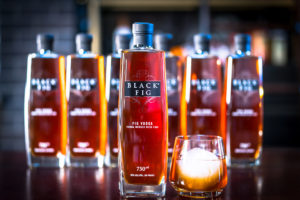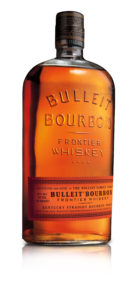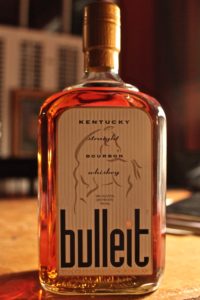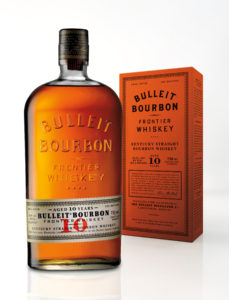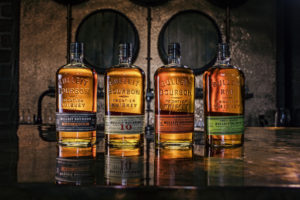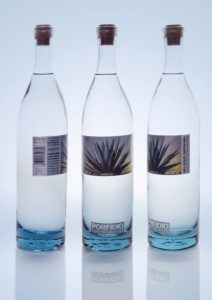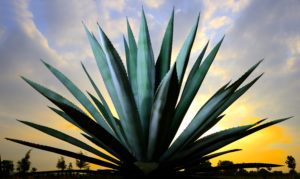The World’s Only Fig-Infused Premium Spirit
Black Fig is a vodka infused with figs, but far from a flavored vodka. Actually, it’s a Distilled Spirit Specialty whereby actual California figs (roughly a pound per bottle) are naturally infused in a neutral grain spirit (NGS) without added sugar or additives.
From what I can tell, this is a home run and has everything going for it right out of the gate—a great tasting product, a unique concept, an incredible cocktail addition, and a passionate owner who knows what he’s doing.
Consider this:
Michael Davidson, the owner and CEO of Black Infusions, walks into a top restaurant and approaches the F&B manager, who promptly tells him he has no time to speak to him. Michael’s combined chutzpah and Boston charm convinces the manager to give him 10 seconds and “just taste this.” He does and the next thing you know they’re talking for half an hour about cocktails, using Black Fig in food recipes, and a large order for the product is placed.
He gets into one of the Total Wine & More stores and conducts a tasting and quickly sells out the three cases he brought—18 bottles in 45 minutes.
At ABC Kitchen in NYC, a distributor sales rep (MS Walker) pitches the brand, does a tasting, and the Food & Beverage Manager falls in love with it. The next thing Michael knows, Black Fig Martini is on the cocktail menu. They sell 25 to 30 (6-pack) cases a month.
I can go on but I think you get the picture. One sip of this product and you’re hooked. So, let’s take a closer look. (By the way, the brand won Double Gold at the 2017 San Francisco Spirits Competition.)
About the owner
Michael Davidson is a born and bred Bostonian who left his successful family business to follow his dream to launch a spirit brand he came across. He was at a Mediterranean restaurant owned by a friend who served a homemade drink consisting of dried figs soaked in vodka. “That’s vodka? This tastes like liquid fig,” said Michael.
A light bulb went on and, after more than two years in development, the product was ready for market. Over the course of that time, a formula/recipe was developed, a contract bottler was engaged, legal issues were addressed, distributors were found, drink recipes created—and, a brand was born.
Michael is a unique kind of guy. I’ve met scores of startup entrepreneurs but he has most of them beat with his thirst for knowledge and information about the booze business; his willingness to make a difficult decision and still change gears when necessary; and, his understanding that without marketing and sales, a product cannot succeed. Above all, I’m very impressed with his passion for the brand and the business.
I’ve met with Michael a number of times in restaurants and he’s fun to watch as he gently but effectively pitches Black Fig. He listens, a trait many wannabe spirit entrepreneurs need to learn.
He’s gotten the brand into 12 markets with a number of distributors, most notably M.S. Walker, and some top on-premise accounts (ABC Kitchen, Bobby Van’s, Mistral, and more) and off-premise accounts, (Wegman’s, Total Wine & More, Whole Foods to name a few). The brand is currently available in the northeast, mainly New England and parts of the mid-Atlantic.
The product
In a word—amazing. As soon as you open the bottle, the aroma of the figs comes pleasantly through. It’s great straight and on the rocks, and you won’t believe what it does to a cocktail. But let’s start with the basics.
Black Fig is an artisanal product distilled with neutral grain spirit and naturally infused with California figs (about a pound per bottle) in small batches. It is 60 proof (30 AbV) and made without artificial sugars, flavors or colors. And, since the NGS (vodka) is made from corn, it is gluten-free and Kosher if that interests you. The product sells for around $30 per 750ml, depending on where you live.
Ah, but the real joy of this product is it’s mixability and versatility—it plays nicely with other ingredients and enhances your favorite cocktail like a Black Fig Martini, a Fig Mojito, Mediterranean Mule, or a Black Fig Old Fashioned. Michael also has quite a number of drinks that he invented like the Fig Flower, the Black Dragon and many more that you’ll find on his recipe page.
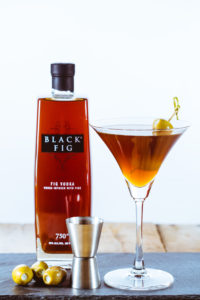
The Future and Challenges
Michael “gets it,” and knows that as a small startup he has to work night and day to increase traction and break through the clutter. One of his favorite expressions is, “Sometimes I feel like I’m screaming from the bottom of the Grand Canyon and trying to get heard.”
But by far, his greatest challenge is being a one-man show. To succeed and grow, he will need to get some sales help, focus his time and energy on things that have the greatest return on the investment of his time, and probably both.
He literally does everything but has some marketing help (conventional and digital) from a very sharp woman named Kalen Junda. Kalen is an entrepreneur in her own right and runs a small marketing company called the Tobe Agency. In my view she is also a rising star.
Among the things I admire about Michael is that he’s not falling into the “startup trap” of expanding markets before he’s ready and thereby spreading his financial and other resources very thin. But that doesn’t mean he’s not thinking about the future.
Down the road, he would like to move into southern and western markets. Hey, come on, a Black Fig product made with California figs? He’s got to be in the Golden State.
He is also thinking about what comes next and has decided on a line extension that he’s not yet ready to reveal publicly. He’s told me about it, sworn me to secrecy, and I know it will also be a home run. I guess I’ll just have to keep following and writing about him and see where this journey takes him.
I’ll just sum it up by quoting another favorite expression from Michael, which he got from VinoTapa restaurant’s drink menu— “Go fig or go home.”

